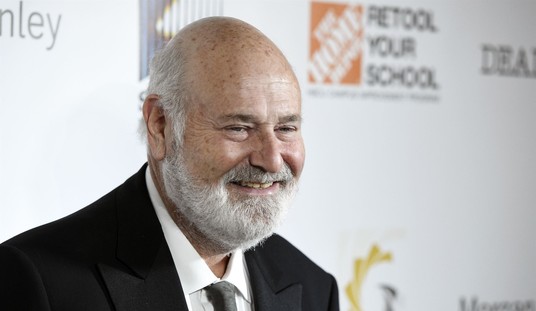For the last three years, I’ve been trying to find a publisher for a book about the deinstitutionalization of the mentally ill and the destructive effects on our society that it has caused. I keep getting told that no one is interested in the topic. The tragedy in Tucson on Saturday — like dozens of other such incidents over the last three decades involving mentally ill persons who made headlines — is the reason that people should be interested. Watching the YouTube videos the shooter made and reading news accounts of his odd behavior leaves no doubt in my mind that the final diagnosis will be paranoid schizophrenia. (I have an older brother who suffered a schizophrenic breakdown in the 1970s. He has never recovered.)
When I was young, random acts of mass murder were shocking. In 1966, Charles Whitman went to the top of a building at the University of Texas and methodically murdered 13 people with a rifle. Such crimes were largely unthinkable until 1984, when James Huberty went into a McDonald’s in San Ysidro, California, and murdered 19 people with a shotgun and an Uzi.
We are not shocked anymore. We are saddened — but the days when gun control advocates could dance in the blood of victims to get another useless gun control law passed are over. Americans are now used to this — and that is the biggest tragedy of all. We just accept this, and don’t ask, “What’s causing this? Can we fix it?”
It is not just Americans who are sitting on the sidelines wondering what happened. In spite of much more restrictive gun control laws in Europe, they have a lot of these mass murders over there also. In Finland. In Germany. In Britain. Of course, since these countries have somewhat restrictive to very restrictive gun control laws, the correct response to laws that did not work is … more of the same.
What changed? Our mental health system is what changed — a movement towards emptying out mental hospitals and making it difficult to commit someone against his will. This is called deinstitutionalization. This is an idea so theoretically elegant that it has been taking place everywhere. In America. In Canada. In Britain. In Finland (which has experienced one of the most rapid movements towards deinstitutionalization in the Western world). And probably in those other European countries as well.
In 1950, a person who was behaving oddly stood a good chance of being hospitalized. It might be for observation for a few days or a few weeks. If the doctors decided that this person was mentally ill, they would be committed, perhaps for a few months, perhaps longer. Hospital space was always at a premium, so generally, if someone was kept, there was a reason for it. The notion that large numbers of sane people were kept for no reason just has not survived my research efforts.
I will not claim that the public mental hospitals back then were wonderful places. They were chronically underfunded from the 1930s through the 1950s, and even into the 1960s, conditions in some were the shame of civilized people everywhere. (Ken Kesey wrote the novel One Flew Over The Cuckoo’s Nest after taking LSD and going to work at a mental hospital, and the film by that name is not a documentary.) But it did mean that many people who were mentally ill were either locked up (where they did not have access to guns, knives, or gasoline) or at least not sleeping on a park bench, catching pneumonia.
Let me tell you a story. In the late 1990s, a rather strange character showed up at the church we attended in Rohnert Park, California. Jim had been sleeping in the fields on the edge of town with his dog, getting around by bicycle with a little trailer for the pooch. He carried an impressive wad of cash, the fruits of a $600 a month Social Security disability check — and no rent to pay. Our pastor had worked in a homeless shelter, but this man did not quite fit the mold, so he asked me to talk to Jim.
Jim told a story of governmental oppression that for the first few minutes, while far-fetched, was not utterly impossible. His kids had been taken from him. His wife was locked up in a mental hospital. It was all a vast conspiracy! The more we talked, however, the more apparent it was that his thought processes, while not completely chaotic, were scattered and confused. Then he showed me the paperwork that had taken away his children. Jim was so confused that he did not realize what it showed.
Jim’s wife had been committed to a mental hospital, apparently because she had physically abused their children, and been found not guilty by reason of insanity. After her hospitalization, Jim had been showing pornographic films to his five year old and his three year old, then molesting them. Jim’s parental rights had been permanently terminated by court order.
Why didn’t the district attorney prosecute Jim? The documents provided no information, but my guess is that the prosecutor realized that a trial would require two small children to testify about sexual abuse by their father — having already lost their mother to mental illness. Under the best of conditions, this would have been a hard case to win in court, and it would certainly have been traumatic for the children.
In 1950, Jim’s mental illness would very likely have led to a commitment to a state mental hospital for the criminally insane. A judge would certainly have committed Jim based on the testimony of a psychiatrist and the evidence of even a few minutes of conversation. Not today. Instead, Jim wandered the streets, telling his tale of woe. The best that we could hope for is that his mentally disordered thinking would be obvious enough to prevent anyone else from putting their children at risk.
As I said, I’ve written a book about the subject. I knew that there were a lot of mentally ill mass murderers out there — but even I was shocked at the dozens of examples that my research unearthed over the last three decades. People like Larry Gene Ashbrook, a mentally ill person who gave plenty of warning. He wrote letters to local papers that “referred to encounters with the CIA, psychological warfare, assaults by co-workers and being drugged by police.” His strange behavior brought him to the attention of the police — who were helpless to take action, until Ashbrook murdered seven people in a Fort Worth church in 1999.
Or Russell Eugene Weston Jr., who was the gold standard of violent mental illness. After he shot two police officers at the U.S. Capitol in 1999, he explained that it was to stop the epidemic of Black Heva, a disease spread by the cannibals that were feeding on corpses — all part of an elaborate government conspiracy that Weston was going to stop. Weston, too, had previous mental health problems that were recognized — but he could not be held, in spite of his obvious dangerousness at least to himself, and probably to others.
I could give you a complete list of mass murderers who were recognized by family and friends as mentally ill and who refused treatment. Authorities were helpless to hospitalize them because of our wonderfully beautiful but completely absurd theories of civil liberties. This list would run on for very many pages.
How many more of these tragedies do we have to watch before we say, “Wow! Great theory! It didn’t work. Let’s reconsider this matter.” I’m afraid it is going to be a lot more tragedies before we start facing the harsh truth.









Join the conversation as a VIP Member